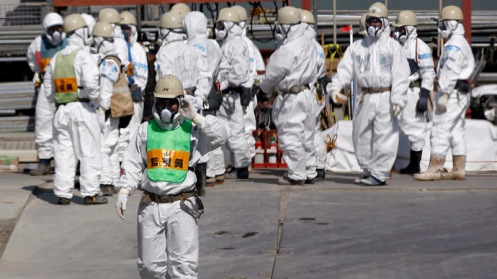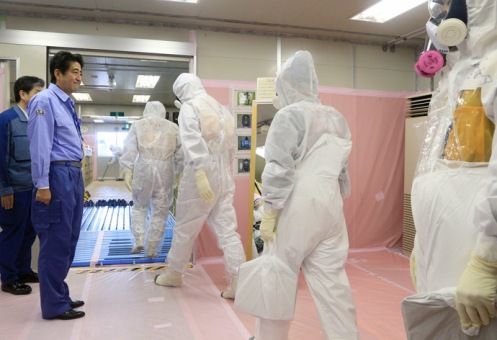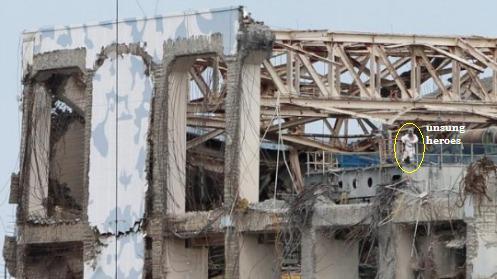Editor's comment: The perilous attempt to clean up Fukushima Reactor 4 is scheduled to begin on November 8. There have been many stories promulgated on the internet about the disaster at Fukushima disaster, initiated primarily by the tsunami of the Tōhoku earthquake and tsunami on 11 March 2011. It is the largest nuclear disaster since Chernobyl and by many accounts it is an even greater threat. Some of the reports are scientifically accurate and some are probably not so. Common Dreams has been reporting consistently on the aftermath of the disaster and Mankh, Axis of Logic columnist and poet, has been closely following the story and keeping us informed. One thing is clear: to a large extent Fukushima and it's aftermath are either disinforming or altogether "unsung" by the corporate media. Mankh introduces the cleanup scheduled to begin on Friday with his poem about the heroes who are placed in great danger as they begin to remove 1300 spent fuel rods. - Axis of Logic
Regulators with Japan's Nuclear Regulation Authority gave the final OK Wednesday for the operator of the crippled Fukushima Daiichi nuclear power plant to begin to remove the 1300 spent fuel rods from the badly damaged Unit 4 pool, thus initiating a decommissioning process which anti-nuclear activist Harvey Wasserman describes as "humankind’s most dangerous moment since the Cuban Missile Crisis." According to Associated Press, the NRA announced that the proposal to manually remove the radioactive rods put forth by the plant operator, Tokyo Electric Power Co. or TEPCO, was "appropriate" and that the removal "can start in November as planned, following an on-site inspection by regulators." TEPCO estimates that the complete decommissioning process will last decades. Detailing the process, AP reports:
However, according to nuclear engineer Arnie Gundersen, the spent fuel rods in the Unit 4 core are "bent, damaged and embrittled to the point of crumbling." And NRA chairman Shunichi Tanaka warned that removing the rods would be difficult because of the risk posed by debris that fell into the pool during the explosions triggered by the 2011 earthquake, tsunami and subsequent three reactor meltdowns at the plant. "It's a totally different operation than removing normal fuel rods from a spent fuel pool," Tanaka said during the news conference Wednesday. "They need to be handled extremely carefully and closely monitored. You should never rush or force them out, or they may break." Wasserman warns that there are "some 400 tons of fuel in that pool [that] could spew out more than 15,000 times as much radiation as was released at Hiroshima." Wasserman, Gundersen and other nuclear watchdogs have warned that neither TEPCO nor the Japanese government has the "scientific, engineering or financial resources to handle" the job and that the situation instead demands a "coordinated worldwide effort of the best scientists and engineers our species can muster." Over 100,000 people have thus far signed a petition echoing that call. "[T]he impending removal of hugely radioactive spent fuel rods from a pool 100 feet in the air presents unparalleled scientific and engineering challenges," caution the signees, who are calling on President Obama and UN Secretary General Ban Ki-Moon to intercept the Japanese authority's process. "We ask the world community [...] to take control of this uniquely perilous task." Source: Common Dreams The Poem
"Fukushima Response: Mobilizing a global effort to fix the escalating nuclear catastrophe in Japan" "Indigenous Elders and Medicine Peoples Council Statement on Fukushima" "Fukushima: A Nuclear War without a War: The Unspoken Crisis of Worldwide Nuclear Radiation" |


